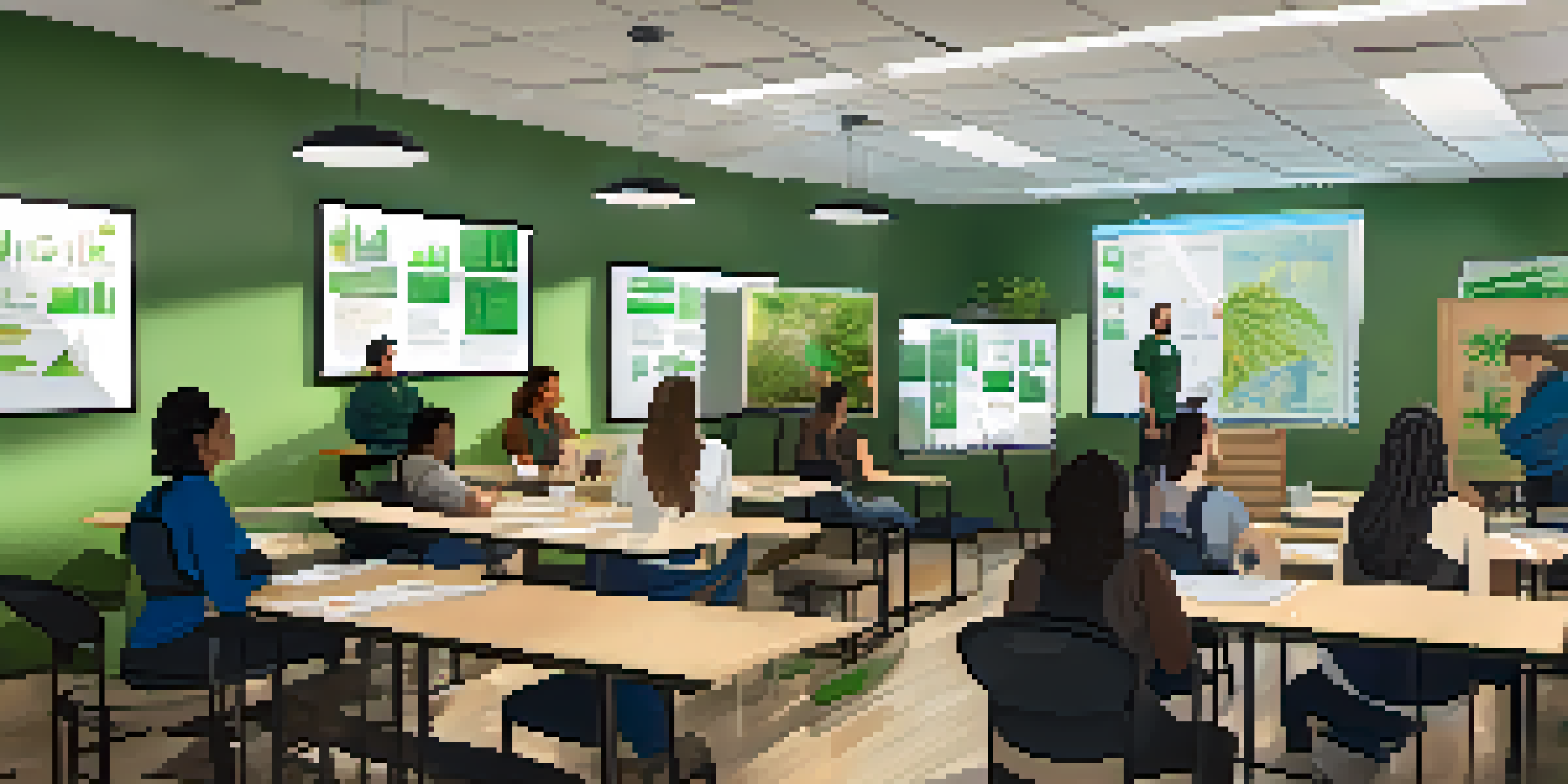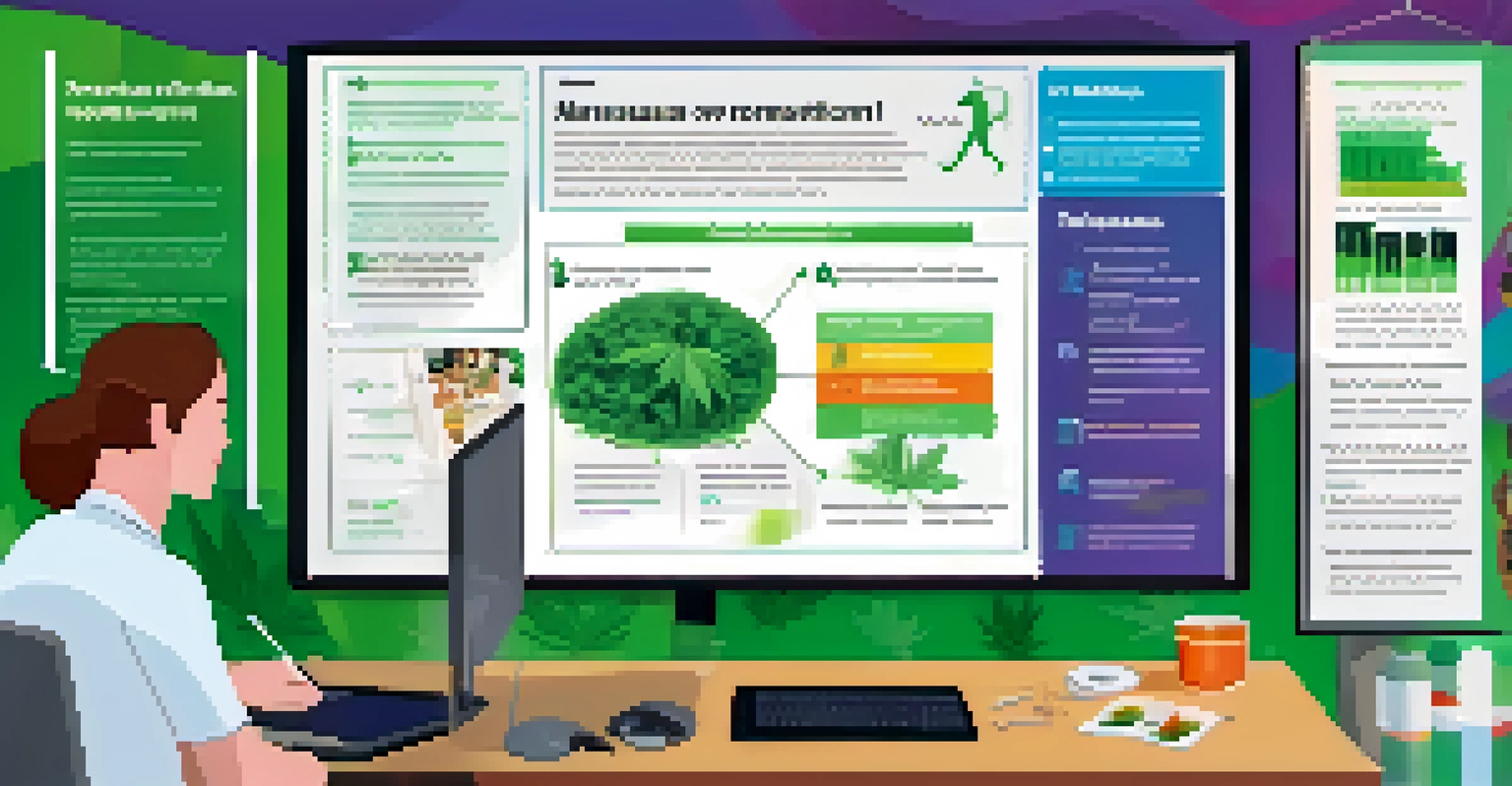Best Practices for Training on Marijuana-Related Emergencies

Understanding Marijuana-Related Emergencies
Marijuana-related emergencies can range from overconsumption to allergic reactions. Recognizing these scenarios is essential for effective training. Knowing the symptoms and potential risks allows responders to act swiftly and accurately during an emergency.
The greatest weapon against stress is our ability to choose one thought over another.
For instance, someone who has consumed too much marijuana may experience anxiety, paranoia, or even hallucinations. Educating staff on these symptoms can create a safer environment for everyone. The goal is to ensure that everyone is prepared to identify and respond to these situations confidently.
Moreover, understanding the legal implications surrounding marijuana use is crucial. As laws continue to evolve, so does the need for clear guidelines on how to handle emergencies. This knowledge not only aids in emergency response but also fosters a responsible approach to marijuana use.
Establishing Clear Training Objectives
Setting clear objectives for training sessions is vital for effective learning. Objectives should outline what participants are expected to know and do after completing the training. This clarity helps ensure that everyone is on the same page.

For example, objectives could include identifying signs of marijuana overconsumption or knowing when to seek medical help. By focusing on specific outcomes, you make the training more relevant and actionable for participants. This targeted approach helps reinforce the importance of the training.
Recognizing Marijuana Emergencies
Understanding the symptoms and legal implications of marijuana-related emergencies is essential for effective response.
Additionally, having measurable objectives allows for assessing the effectiveness of the training program. Feedback can be gathered to refine future sessions, making them even more impactful. Continuous improvement is key to maintaining an effective training regimen.
Incorporating Real-Life Scenarios in Training
Using real-life scenarios during training helps participants relate to the material. Scenarios can include role-playing exercises, case studies, or simulations that mimic actual emergencies. This hands-on approach makes learning more engaging and practical.
An ounce of prevention is worth a pound of cure.
For instance, consider a scenario where a participant acts as a bystander witnessing someone experiencing a marijuana-related emergency. This allows them to practice their response in a controlled environment, boosting their confidence. The more realistic the training, the better prepared participants will be in genuine situations.
Moreover, discussing past incidents can provide valuable insights into what went wrong and what could have been done differently. Learning from real experiences not only enhances understanding but also fosters a culture of safety and preparedness.
Utilizing Visual Aids and Resources
Visual aids can significantly enhance training sessions by breaking down complex information. Charts, infographics, and videos can illustrate key concepts, making them easier to digest. These tools can also help participants remember important details when faced with a real emergency.
For example, an infographic detailing the signs of marijuana overconsumption can serve as a quick reference during training. Participants can visually connect symptoms with appropriate responses, reinforcing their learning. Incorporating multimedia elements keeps the training dynamic and engaging.
Setting Clear Training Objectives
Establishing specific training objectives helps participants know what to expect and how to respond effectively.
Additionally, providing resources for further learning can empower participants to explore more about marijuana-related emergencies. Handouts, online resources, or access to webinars can extend the learning experience beyond the training session. This ongoing education is vital in maintaining a knowledgeable response team.
Emphasizing the Importance of Communication
Effective communication is paramount during emergencies, especially those involving marijuana. Training should include strategies for clear, concise communication among team members and with individuals in distress. This ensures that everyone involved understands what is happening and what steps need to be taken.
For instance, practicing communication techniques can help participants convey critical information quickly. This could include using simple language, active listening, and confirming understanding. Such skills are essential in high-pressure situations where clarity is crucial.
Moreover, fostering an environment where team members feel comfortable sharing information can enhance overall responsiveness. Encouraging open dialogue before, during, and after training builds trust among participants, ultimately leading to better teamwork in emergencies.
Regularly Updating Training Materials and Protocols
The landscape of marijuana use and regulations is constantly changing, making it important to regularly update training materials. Keeping protocols current ensures that participants are equipped with the latest information and best practices. This ongoing commitment to improvement reflects a proactive approach to safety.
For example, if new research emerges about the effects of marijuana, training sessions should be adjusted accordingly. Regular updates can also include changes in laws or regulations that impact how emergencies are handled. Staying informed helps maintain compliance and promotes responsible practices.
Evaluating Training Effectiveness
Regular assessment of training impact ensures continuous improvement and reinforces the importance of preparedness.
Additionally, soliciting feedback from participants can provide insights into areas needing improvement. This collaborative approach not only enhances the training program but also fosters a sense of ownership among participants. Everyone becomes invested in creating a safe environment.
Evaluating Training Effectiveness and Impact
To ensure that training on marijuana-related emergencies is effective, it's crucial to evaluate its impact. This can be done through assessments, surveys, or practical exercises that measure participants' knowledge and skills. Continuous evaluation helps identify strengths and areas for improvement.
For instance, conducting a post-training quiz can provide immediate feedback on what participants have learned. Analyzing results can reveal common knowledge gaps, allowing for targeted revisions in future sessions. This iterative process strengthens the overall training approach.

Furthermore, tracking incidents where training has been applied can offer valuable insights into its real-world effectiveness. Gathering data on how well participants respond during emergencies can help refine training and highlight its importance. Ultimately, this evaluation process cultivates a culture of learning and safety.